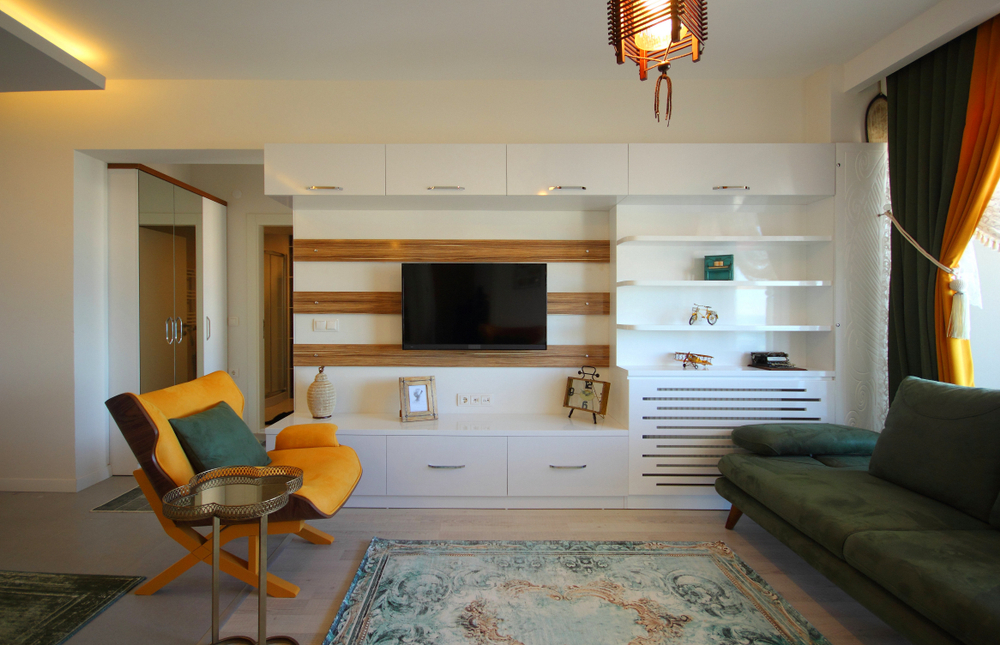Adding a bench to your living room can seem like a tricky prospect at first. These simple items are furniture that tends to be relegated to the outside, where they sit just below eye level and go unnoticed. It’s difficult to imagine what a bench might add to the heart of your home.

But the bench is so much more than its humble beginnings. Once you start thinking of it as a viable piece of furniture, you’ll start to see how useful the bench can be in every room of the house.
Yes, you can put a bench in the living room - and if you’re looking for versatile furniture with adaptable uses, you really should! A bench can be used for storage or seating, display or divider.
With a little dressing up, the simple bench can ease its way into any living room. We’ve compiled a list of the best ways to use your bench, to get you started:
As Seating
The most obvious way to use a bench is in the way it was originally intended - as seating! All homes could do with a little extra seating, to make sure there’s ample room for guests.
A thin bench is easy to slip into small corners, and lacks the bulk of bigger chairs. When guests are over, it can be easily drawn into the room.
If you want the bench used as seating full time, then adding some upholstery can really soften the effect. Because it’s such a small item, and lower than the eye line, this is a great way to bring color to the living room without becoming overwhelming.
Otherwise, decorate the bench with a few throw pillows. Embroidered cushions, or those with a bold print, are particularly good choices. This way, when the bench isn’t in use, it becomes an attractive display.
As A Coffee Table
You might not think to use a bench as a coffee table just because, well, it’s not a coffee table. But the long shape, low height, and sturdy base of a bench all add up to a pretty great coffee table. And the extra advantage is that it can double as seating when necessary.
Use a serving tray to add a touch of decoration to the bench, and to provide a completely flat surface. Then, a nice, thick coffee table book and a simple flower arrangement will finish the transformation.
Long and thin, the bench is a surprisingly useful shape to center a room around. If you have an open space, the bench can fill the room without being as bulky as a traditional table.
As A Display Unit
Finding the right balance in a living room can be difficult. As a functional space, there needs to be areas for movement, as well as places to sit. That can mean that all those lovely items you own aren’t displayed to their full potential.
This is where the bench comes in. The low height is perfect when tucked against the wall, adding a subtle shelving unit. Placed under a television, this simple space can add a personal touch to an otherwise wasted wall.
A thin bench is ideal for spaces that are otherwise left empty, particularly those beneath large pictures. And when guests are over, it can hold snacks and drinks.
If you’re trying to create storage, there’s often space under a bench that can fit baskets and boxes. Keep extra cushions inside, to quickly transform your bench back to a seating area.
As A Divider
As lovely as an open-plan living room is, there are some downsides. Too many items, and the space becomes jumbled and disorganized. Too few, and it feels empty and cold. To make the most of an open-plan room, it needs to be divided into smaller zones.
This is where the bench comes in. A simple bench offers a way to create a zone, without closing the room off. A bench at the edge of the seating area adds order, but it doesn’t dominate.
In an open-plan living room, it’s important to create a flow of movement. Benches can be an interesting way to do this, without adding extra bulk. Use a backless bench to create a two-way system, and facilitate conversation.
As A Window Seat
Natural light is an important factor to good physical and mental wellbeing. Having seating in front of the window is a fantastic way to add a little extra sunshine into the day-to-day. However, bulky sofas often block more than they frame, keeping light from the rest of the room.
A bench, on the other hand, provides seating without preventing light from entering. Place a bench in front of the window, add some pillows and blankets, and you have an instant reading nook.
If you don’t have space by the window, a bench can be used to create small seating areas elsewhere. Look for underused corners, add some soft lighting, and the bench becomes a cozy corner.
As A Sofa Table
The back of the sofa is rarely an attractive viewing point. Instead, it closes off conversation, and creates an imposing wall. A sofa table helps to soften this effect, and it can be used as both storage and display.
A bench is a fun alternative to the sofa table. This extra shelf can be used to hold plants and books, but also acts as storage for more everyday items like remote controls and newspapers.
In an open-plan room, this will be where the eye is drawn - not the back of the couch. Instantly more welcoming, the bench can also double up as seating during busy occasions.
Don’t shy away from adding a bench to your living room! Whether you have an indoor bench, an outdoor bench, or a storage bench, there are plenty of ways to use them in the living room.
And a bench is so versatile, it doesn’t have to be just one thing. Instead, let it adapt and change with the use of the room.






